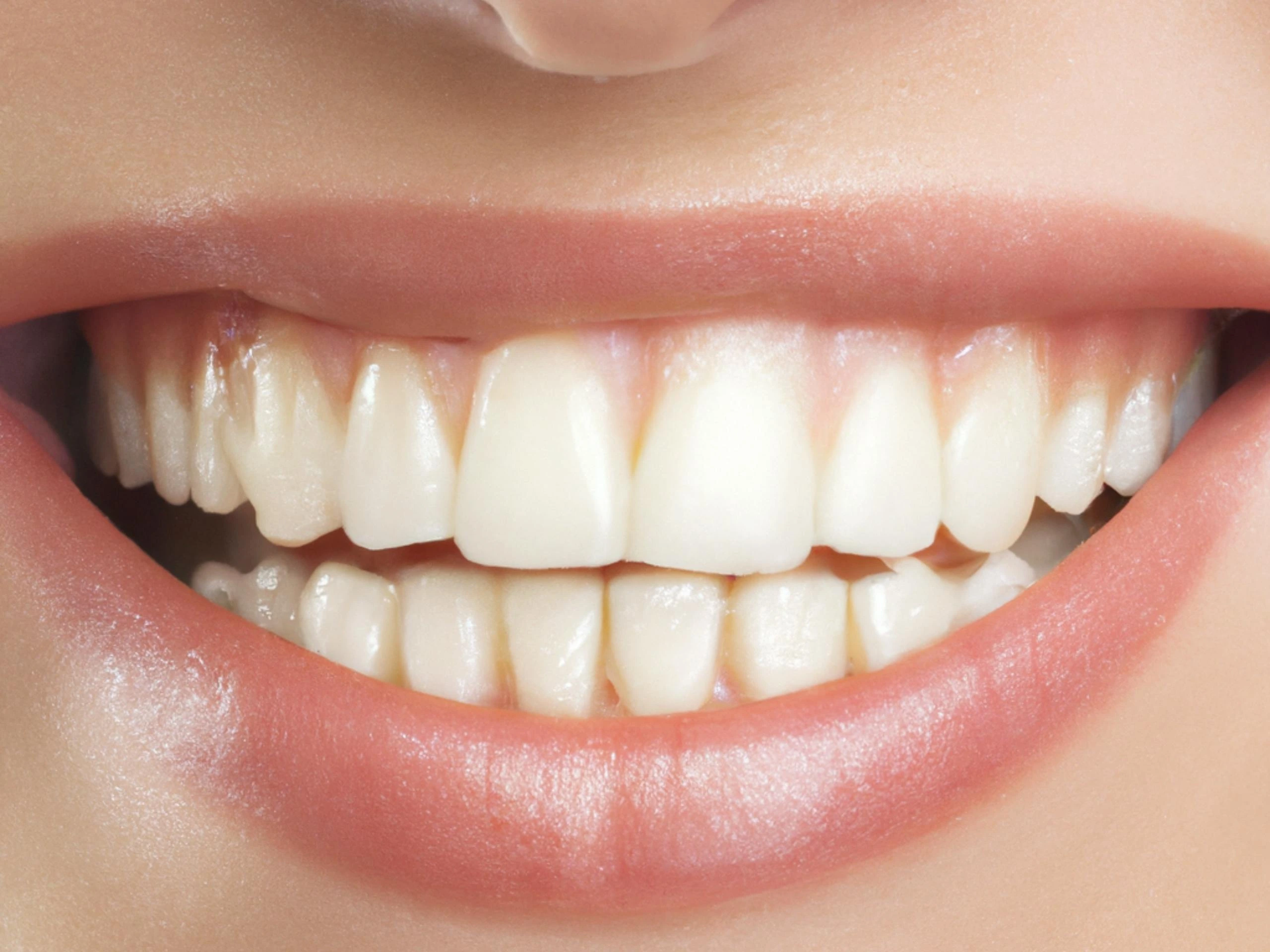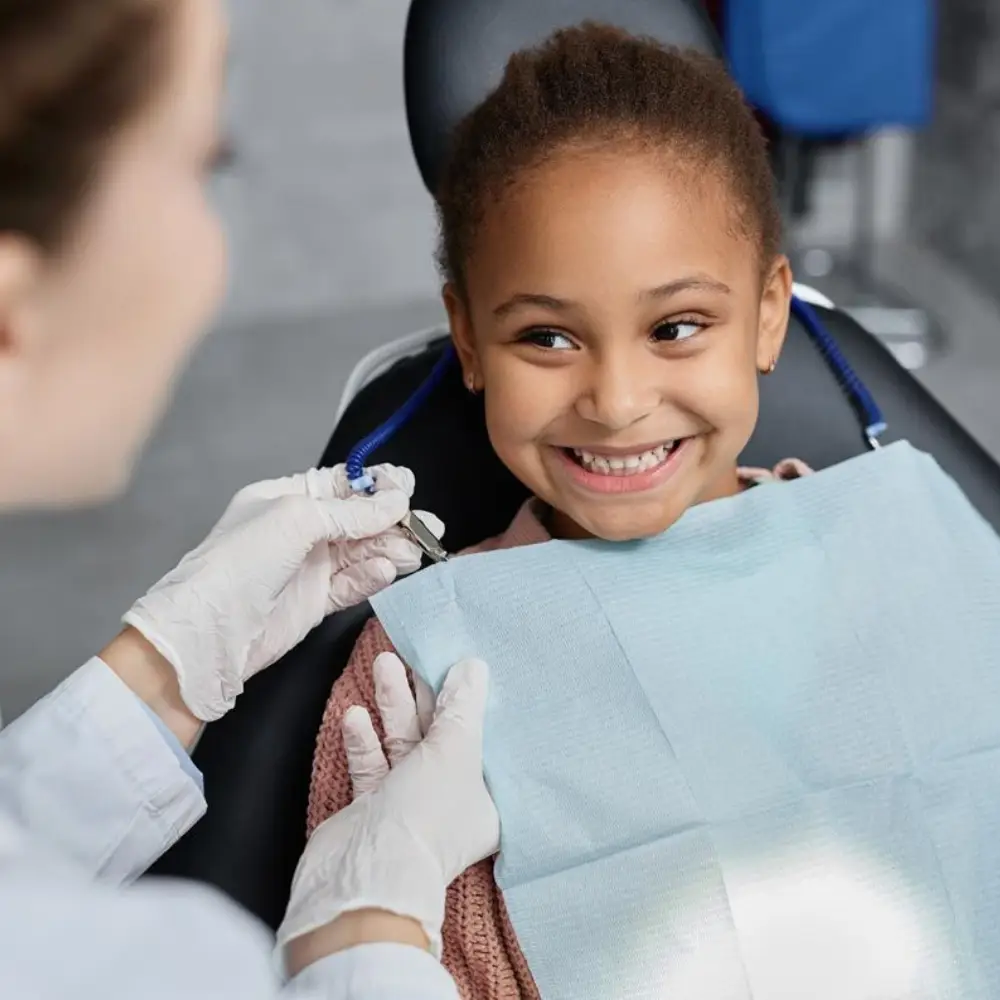Many people turn to teeth whitening in 2025 to enhance their appearance and feel more confident when they smile. As the demand for whiter teeth grows, the number of whitening products on the market has expanded dramatically. With so many kits, strips, gels, and professional treatments available, choosing the safest and most effective option can feel overwhelming.
In this comprehensive guide, we’ll explore the best teeth whitening kits of 2025, explain how they work, compare them to professional treatments, and provide advice for those with sensitive teeth. Whether you’re looking for a simple at-home solution or considering professional whitening with G&P Dental, this guide will help you make an informed decision.
Best Teeth Whitening Kits: What to Look For

Not all whitening kits are created equal, and choosing the right one can make a significant difference in both the safety and effectiveness of your results. When shopping for a whitening kit, start by reviewing the active ingredients, look for dentist-approved agents like hydrogen peroxide or carbamide peroxide, which are proven to safely lift stains. Be cautious of kits with harsh or unknown chemicals that could damage your enamel or increase sensitivity.
Next, consider the delivery system. Options such as custom-fit trays, LED light accelerators, or pre-filled strips can affect both comfort and outcome. Custom trays often provide better contact with the teeth for more even whitening, while LED lights may help speed up the process. It’s also important to research the manufacturer’s reputation, reading reviews and ensuring the product is backed by clinical studies or professional endorsements. Choosing a reputable brand adds an extra layer of confidence that the kit you select is both safe and effective.
Key Ingredients in Professional-Grade Whitening Kits
The active ingredient is the heart of any whitening product. Most effective teeth whitening kits contain one of the following:
- Carbamide Peroxide: A slower-releasing whitening agent that breaks down into hydrogen peroxide.
- Hydrogen Peroxide: The most common whitening agent, offering fast results by penetrating enamel and breaking up stains.
- PAP (Phthalimidoperoxycaproic Acid): A newer ingredient marketed as a gentler alternative to peroxide, particularly for sensitive teeth.
Professional-grade kits often contain 10–35% carbamide peroxide or 6–10% hydrogen peroxide, providing safe yet powerful whitening when used as directed.
Comparing Popular Whitening Kits: Pros and Cons
Here’s a quick comparison of some top-rated whitening kits available in 2025:
| Kit | Pros | Cons |
|---|---|---|
| Opalescence Go | Pre-filled trays, consistent results, dentist recommended | May cause sensitivity |
| Snow Teeth Whitening | LED light system, lower sensitivity, easy to use | Pricier than basic kits |
| GLO Brilliant | Gentle on sensitive teeth, short treatment times | Initial investment is higher |
| Auraglow | Affordable, noticeable results | Results may take longer |
| HiSmile | PAP formula, minimal sensitivity | May not be as strong for heavy staining |
Selecting the right kit depends on your goals, budget, and comfort level.
Why Some Kits Work Better for Sensitive Teeth
People with tooth sensitivity may benefit from lower peroxide concentrations or alternative ingredients like PAP. Kits specifically designed for sensitivity often include soothing agents such as:
- Potassium nitrate
- Fluoride
- Xylitol
These ingredients help calm nerve endings and strengthen enamel while whitening.
Teeth Whitening Strips vs. Kits: Which Should You Choose?
Both whitening strips and comprehensive whitening kits present viable methods for enhancing dental aesthetics, yet each possesses distinct advantages. Whitening strips, characterized by their simplicity and convenience, are ideal for individuals with demanding schedules seeking expedient and user-friendly solutions. Their pre-measured format minimizes preparation and application errors, though their efficacy is generally confined to addressing mild or moderate discoloration.
Conversely, full whitening kits typically yield more substantial results, particularly for individuals contending with pronounced or persistent stains. These kits may incorporate custom-fitted trays, LED acceleration devices, or elevated concentrations of active ingredients, thereby facilitating a more controlled and intensive whitening regimen. Although the process demands greater time investment and procedural adherence, users often benefit from more significant and enduring improvements in dental whiteness.
Ultimately, the selection between strips and kits should be informed by one’s specific whitening objectives, sensitivity considerations, and lifestyle constraints.
Effectiveness of Whitening Strips
Whitening strips are widely available and easy to apply. They work well for mild surface stains and are ideal for first-time users. Strips usually contain lower concentrations of hydrogen peroxide (5-10%), which means results can take longer to appear compared to more concentrated kits.
Advantages of Comprehensive Whitening Kits
Whitening kits often include:
- Custom-fit or universal trays
- Higher peroxide concentrations
- LED light systems to accelerate whitening
These features allow kits to deliver deeper stain removal and faster results, especially for stubborn discoloration.
Cost Comparison and Results Timeline
| Type | Average Cost | Visible Results |
|---|---|---|
| Whitening Strips | $20 – $50 | 1-2 weeks |
| At-Home Kits | $50 – $300 | 3-7 days |
| Professional Whitening | $400 – $1,000 | Immediate |
While kits cost more upfront than strips, they often provide longer-lasting, more dramatic results.
How Much Is Teeth Whitening at Home vs. Professional Treatments?
The cost of teeth whitening spans a considerable range, contingent upon the chosen method. Over-the-counter products—such as whitening strips, gels, or kits—are generally priced between $20 and $150. These options are widely accessible and relatively economical, though their efficacy may be limited, particularly in cases of significant dental discoloration. Users should also anticipate a gradual progression toward noticeable results.
Conversely, professional whitening treatments administered in a dental office typically range from $300 to $1,000 or more, with final costs influenced by the provider and specific whitening system employed. While the expense is notably higher, these treatments tend to produce more immediate, pronounced, and enduring results. Dentists can individualize the procedure to address the patient’s unique needs, all while monitoring oral health to reduce potential adverse effects such as sensitivity or irritation.
A clear understanding of these cost distinctions can assist individuals in aligning their financial considerations with their desired cosmetic outcomes.
Understanding Teeth Whitening Cost Variations
At-home kits generally cost between $50 and $300, depending on the brand, concentration, and included tools (LED lights, trays, desensitizing gels).
Professional treatments at a dental office typically range from $400 to $1,000. This includes customized treatment, stronger whitening agents, and supervision by a dental professional, which reduces the risk of complications.
When to Consider Professional Teeth Whitening Instead
Professional whitening may be a better choice if:
- You have deep intrinsic stains (from medications or trauma).
- You want faster, more dramatic results.
- You’ve previously experienced sensitivity with at-home products.
- You want a treatment plan supervised by a dentist for maximum safety.
G&P Dental offers both in-office and take-home professional whitening, allowing flexibility based on your needs.
Budget-Friendly Tips for Safe At-Home Teeth Whitening
If professional treatment isn’t feasible, you can still achieve great results at home by:
- Choosing dentist-approved kits.
- Following usage instructions carefully.
- Avoiding overuse to prevent enamel damage.
- Using desensitizing toothpaste if needed.
Avoid shortcuts like internet fads or unregulated whitening powders, which may do more harm than good.
Teeth Whitening for Sensitive Teeth: Best Kit Recommendations
Tooth sensitivity presents a notable challenge for individuals seeking dental whitening, yet it does not preclude the pursuit of a brighter smile. Appropriate whitening methods remain accessible when one carefully selects products formulated for sensitive teeth. These specialized kits typically feature lower concentrations of hydrogen peroxide or carbamide peroxide, thereby minimizing potential discomfort while still producing gradual whitening effects.
In addition, many sensitivity-conscious whitening products incorporate desensitizing agents such as potassium nitrate or fluoride. These compounds serve to fortify enamel and mitigate the discomfort often associated with whitening procedures. Custom-fit trays may further enhance the process by ensuring even application of the whitening gel and protecting the gums from unnecessary exposure.
It is essential to adhere strictly to usage guidelines provided with such products, as improper use may increase the risk of sensitivity or other side effects. Consulting a dentist prior to beginning a whitening regimen is advised, as dental professionals can recommend the safest and most effective options based on individual needs. Ultimately, with appropriate precautions and informed choices, individuals with tooth sensitivity can still achieve noticeable improvements in dental aesthetics.
Ingredients to Avoid If You Have Sensitivity
When considering teeth whitening options particularly for individuals with sensitive teeth, it’s critical to avoid certain ingredients that may exacerbate dental issues. High concentrations of hydrogen peroxide (exceeding 10%) are associated with an increased risk of tooth sensitivity, gum irritation, and potential enamel damage, especially when used without proper supervision.
Additionally, abrasive agents such as charcoal or baking soda-based formulations, while marketed for their stain-removing capabilities, can erode enamel over time. This abrasion not only heightens sensitivity but can also contribute to long-term oral health concerns. Acidic components, including citric and malic acids, further pose a risk by weakening enamel and increasing susceptibility to both sensitivity and decay.
For those with sensitivities, it is advisable to select whitening products specifically labeled as enamel-safe and suitable for sensitive teeth. Such formulations typically contain lower concentrations of peroxide and may incorporate ingredients like fluoride or potassium nitrate, which help protect enamel and mitigate sensitivity during the whitening process.
Best Practices for Minimizing Discomfort
To effectively whiten sensitive teeth while minimizing discomfort, consider the following strategies:
- Limit whitening sessions to brief intervals—generally 15 to 30 minutes. Shorter exposure reduces the risk of sensitivity while still allowing the active ingredients to gradually work.
- Space each treatment at least 48 to 72 hours apart. This interval gives enamel time to recover and remineralize, which helps reduce irritation and maintain oral health.
- After whitening, apply a desensitizing gel containing agents such as potassium nitrate or fluoride. These substances can soothe nerve sensitivity and offer additional enamel protection.
- Incorporate fluoride toothpaste into your oral care routine both before and after whitening procedures. This practice strengthens enamel, which is crucial for preventing sensitivity and preserving dental integrity.
By adhering to these recommendations, individuals can pursue a brighter smile while keeping tooth sensitivity in check.
How G&P Dental Supports Sensitive Teeth Whitening
At G&P Dental, we assess each patient’s dental health before starting any whitening treatment. For those prone to sensitivity, we offer:
- Customized whitening trays to minimize gum irritation.
- Lower-concentration formulas with gradual results.
- Desensitizing treatments before and after whitening.
This personalized approach allows patients to whiten comfortably while protecting their enamel.
Teeth Whitening Near Me: How to Choose the Right Provider
Selecting an appropriate dental practice for whitening treatments goes beyond mere convenience or cost considerations. An established, reputable provider should begin with a comprehensive oral examination, ensuring that the patient is genuinely suitable for the procedure. Evaluation of factors such as sensitivity, pre-existing dental work, and overall oral health is crucial, as these elements can significantly impact both the safety and effectiveness of whitening.
Furthermore, it is advisable to seek out practices utilizing scientifically validated, professional-grade whitening systems. Transparency regarding treatment costs, realistic outcome expectations, and post-procedure care is also essential. Prospective patients should consider reading reviews, inquiring about the provider’s experience with cosmetic dentistry, and assessing the clarity of the consultation process. Ultimately, the ideal practitioner will prioritize patient well-being and long-term oral health, providing care that results in both a brighter smile and sustained confidence.
In-Office Teeth Whitening vs. At-Home Kit Guidance
At G&P Dental, patients are presented with two primary teeth whitening modalities, each tailored to distinct needs and preferences. The first option, in-office whitening, delivers expedited and significant results in a single session. Administered by dental professionals, this procedure employs advanced whitening agents under controlled conditions, ensuring both efficacy and patient safety. This method is particularly suitable for individuals seeking immediate and noticeable improvement, often with minimal sensitivity.
Alternatively, the practice offers custom take-home whitening kits. These kits include trays precisely fitted to the patient’s dentition, facilitating gradual whitening over time. Patients benefit from the flexibility to conduct the whitening process at their convenience, while still receiving clinical oversight and guidance to maximize both safety and effectiveness.
Prior to initiating treatment, the dental team conducts a comprehensive consultation. Patient goals, oral health status, and lifestyle factors are carefully assessed in order to recommend the most suitable whitening strategy. Whether rapid results or a more gradual approach is preferred, G&P Dental is committed to supporting patients in achieving an enhanced, confident smile.
Scheduling a Whitening Consultation at G&P Dental
- During your whitening consultation, we adopt a tailored approach rather than a generic solution. We begin by thoroughly reviewing your dental history—prior treatments, sensitivities, and any ongoing conditions that could influence outcomes are all considered. This careful assessment helps us anticipate any potential challenges or contraindications, such as weakened enamel, gum recession, or the presence of restorations.
- Next, we evaluate your current tooth shade and the nature of any existing stains. This enables us to determine both the severity and the underlying causes, allowing for the formulation of a treatment plan that specifically addresses your needs.
- We also identify any risks associated with whitening in your particular case, making note of issues that may necessitate special precautions.
- Finally, based on all collected information, we recommend the safest and most effective whitening options available. The objective is not only to enhance esthetic results, but also to maintain your long-term oral health.
This detailed, individualized evaluation process ensures that your whitening treatment is both effective and safe, optimizing outcomes while prioritizing your comfort and wellbeing.
What Questions to Ask Before Starting Treatment
Before whitening, ask:
- Is my dental work (crowns, veneers, fillings) safe to whiten?
- What whitening level can I realistically achieve?
- How long will results last?
- What should I do if I experience sensitivity?
- Will you monitor my progress throughout treatment?
A thorough discussion ensures realistic expectations and optimal care.
Frequently Asked Questions (FAQs)
1. Are teeth whitening kits safe for daily use?
No, daily use of whitening kits is not recommended. Overuse can lead to enamel weakening and increased sensitivity. Most kits are designed for use a few times per week or in limited treatment cycles. Always follow the manufacturer’s directions and consult your dentist if you’re unsure.
2. How long do results from whitening kits last?
Results typically last between 6 months to 2 years, depending on your oral care routine, diet, and lifestyle. Avoiding staining foods and drinks like coffee, red wine, and tobacco helps maintain results. Regular dental cleanings also extend the effects of whitening treatments.
3. Can whitening kits damage dental work like crowns or veneers?
Whitening kits do not affect crowns, veneers, or composite fillings because these materials do not respond to whitening agents. This can create uneven color if your natural teeth whiten but dental work remains the same shade. Discuss any cosmetic dental work with your dentist before whitening.
4. What’s the difference between whitening strips and kits?
Whitening strips are thin, flexible pieces coated with a whitening agent and applied directly to the teeth. Kits often include custom trays, higher-strength agents, and sometimes LED lights for deeper whitening. Kits generally provide stronger, longer-lasting results than strips.
5. Is professional teeth whitening better than kits?
Professional whitening delivers faster, more controlled results with stronger whitening agents under dentist supervision. While at-home kits can be effective for minor stains, professional whitening is ideal for deep discoloration, uneven staining, or patients concerned about sensitivity.
Ready to achieve a brighter smile safely and comfortably? Explore the best teeth whitening kits of 2025, carefully selected for their effectiveness and enamel-friendly formulas. Don’t let stains hold you back—choose a kit that fits your needs and lifestyle. Always consult your dentist before starting any whitening routine to ensure the best results. Start your journey to a confident, radiant smile today!


